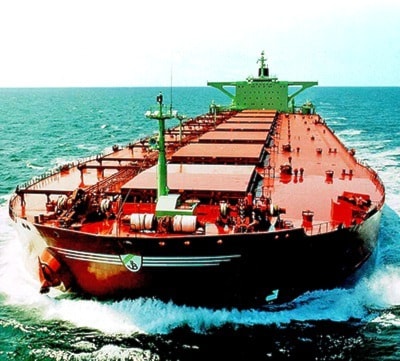A representative of Kinder Morgan Canada Inc. pitched his company's proposal to expand its trans-mountain pipeline to directors at the Regional District of Nanaimo last week.
Michael Davies, the director of marine development for Kinder Morgan, said the existing pipeline to Burnaby will be expanded to increase the amount of tankers — there are currently four tankers per day plying the Salish Sea, two empty and two full. This would increase to six.
In his presentation, he stressed that the extra tankers would utilize extensive safety measurers in order to prevent a spill.
"The ships calling in Vancouver do so through a well-established system, with pilotage and tug escorts," he said. "The aids to navigation are well-established and the area is monitored by both the Canadian and U.S. Coast Guards. For loaded tankers, tugs have to be tethered in Vancouver Harbour and they must have two pilots on board."
He also noted that all vessels are double hulled and rigorously inspected.
"Tankers are among the highest scrutinized vessels in the shipping world," he said.
Kinder Morgan, he said, is conducting two years of public consultation — of which the presentation to the RDN was a part.
"Our target is to file an application with the National Energy Board this year," he said. "The application should be submitted in December and we will continue our consultations. It's a two-year regulatory process, so we don't expect an answer before 2015 and the earliest we could see this is 2017."
He conceded that having more oil tankers plying the waters would increase the risk of a spill, but stressed it remains a small risk.
"The probability would increase because of increased tanker traffic," he said. "That's very small, but that is where the change of risk comes from."
Directors had some tough questions for Davies, with Parksville director Marc Lefebvre leading the discussion.
"You talked about risk assessment," he said. "That's a mathematical thing. What did it tell you? Will the number of potential spills increase with the volume?"
Davies stressed the study is not completed yet, noting it begins with a traffic study and what the realistic worst-case scenario for an oil spill would be and the probability of an accident that could lead to a spill.
"The other piece we are looking at is the consequences," he said.
"We do trajectory modeling of where oil could go from a spill. Then we look at one deterministic spill to look at the environmental consequences."
Lefebvre followed up with a query about the company's maximum liability in the event of a spill, noting that once the tanker leaves port it is no longer a Kinder Morgan responsibility.
"I've been told that if a tanker did damage, the liability would be 10 per cent of the overall destruction," he said.
Davies replied that while there is a $132 million cap, there are other funds — more than $1 billion — that would kick in if they were needed.
For his part, City of Nanaimo director Jim Kipp expressed concern about whether or not Canada has the physical capacity to deal with a major spill.
"I am concerned with our coast guard and its ability to contain an oil spill," he said. "What work have you done with the Coast Guard?"
In response, Davies noted that Western Canada Marine Response is the agency that is responsible for providing oil spill response.
"The Coast Guard's role is as a federal monitoring agency," he said. "They do have the ability to take over direction of it if the responsible party isn't performing, but their role is primarily as a monitoring agency."
Gabriola Island director Howard Houle said the oil spill response issue is troubling.
"I have great concerns about the increase in tanker traffic you're telling us about," he said. "Those concerns fall mainly around oil spill response. You have good response in a harbour, but otherwise, not really. It can take 72 hours to get equipment there. That's not good enough. If there was a spill, there would be damage to fisheries and recreation and the coastline."
Houle quizzed Davies on the properties of the diluted bitumen that would be transported past the Gulf Islands.
"I'm told that if it floats it's relatively easy to clean up, but if it sinks, how are you going to get it off the bottom?" he asked. "The damage done to the environment would be huge. It's not an issue of if, but rather, of when."
Davies conceded the response time has room for improvement, noting it's the main reason for the federal and provincial reviews.
"We are looking at what is required to reduce response times to significantly less than 72 hours," he said. "That's a commitment we are prepared to make through the hearing process. I would expect to see significant enhancements to reflect the potential risks this project could present."
He said as well that comprehensive tests done over a 10-day period in a variety of wave and wind conditions.
"We didn't see any of it sink during this period," he said. "We also tested conventional skimming equipment and it was quite effective. We also looked at burning, dispersants and beach cleaning agents."
